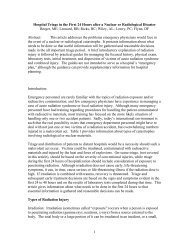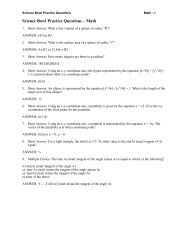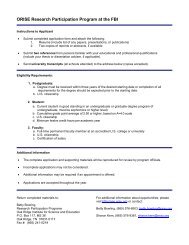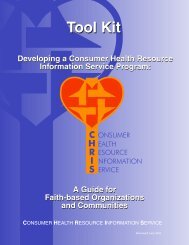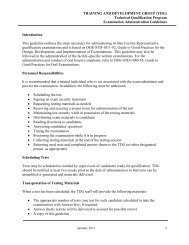Internal and external factors that encourage or discourage
Internal and external factors that encourage or discourage
Internal and external factors that encourage or discourage
You also want an ePaper? Increase the reach of your titles
YUMPU automatically turns print PDFs into web optimized ePapers that Google loves.
(People) "residing in lower socioeconomic urban areas may be less likely than their m<strong>or</strong>e affluent<br />
peers to.detect <strong>and</strong> respond to symptoms, seek prompt <strong>and</strong> effective medical care, <strong>and</strong> comply with<br />
directions f<strong>or</strong> successful treatment <strong>and</strong> follow-up." (Darrow, 1989 [9])<br />
"Individual behavi<strong>or</strong> responds to n<strong>or</strong>mative expectations of social settings." (Ewart, 1991 [11])<br />
"Political arrangements <strong>that</strong> empower groups by giving them ownership of material resources,<br />
inf<strong>or</strong>mation, <strong>and</strong> decision-making auth<strong>or</strong>ity foster individual empowerment of group members by<br />
providing direct experience in <strong>or</strong>ganizing people, identifying resources, <strong>and</strong> developing strategies f<strong>or</strong><br />
achieving goals." (Ewart, 1991 [11])<br />
"Personal change is constrained.., by the behavi<strong>or</strong>'s compatibility with enduring communal values<br />
<strong>or</strong> practices." (Ewart, 1991 [11])<br />
"The role <strong>that</strong> group n<strong>or</strong>ms <strong>and</strong> pressures play in attitude f<strong>or</strong>mation <strong>and</strong> behavi<strong>or</strong> change has been<br />
well documented throughout the development of social psychology." (O'Keeffe, 1990 [16])<br />
"The degree to which the values of influential reference groups match those values necessary f<strong>or</strong><br />
risk reduction <strong>and</strong> prevention is a predict<strong>or</strong> of ultimate practice of (disease)-preventing behavi<strong>or</strong>s. It is<br />
proposed <strong>that</strong>, f<strong>or</strong> desired behavi<strong>or</strong> change to be realized, the goals of (disease) prevention eff<strong>or</strong>ts must be<br />
consistent with the n<strong>or</strong>ms of appropriate <strong>and</strong> influential reference groups." (O'Keeffe, 1990 [16])<br />
"Fishbein's model of behavi<strong>or</strong>al intentions explicitly recognizes the imp<strong>or</strong>tance of social n<strong>or</strong>ms as<br />
determinants of health intentions." (Page, 1985 [17])<br />
"The environment can be viewed as an enabler of health behavi<strong>or</strong> exemplified by the... exposure<br />
to interpersonal modeling <strong>or</strong> cultural practices <strong>that</strong> foster health-promotive behavi<strong>or</strong>." (Stokols, 1992<br />
[21])<br />
4. Biologic<br />
"Environmental settings <strong>and</strong> social systems affect personal behavi<strong>or</strong> by...affecting one's<br />
biological condition, . . .<strong>and</strong> interacting with physiological processes to generate mood states <strong>that</strong> bias<br />
cognition <strong>and</strong> constrain social interaction." (Ewart, 1991 [11])<br />
"Physical settings <strong>and</strong> social systems both affect <strong>and</strong> interact with biological structures <strong>and</strong><br />
processes within the person to create intrapersonal contexts <strong>that</strong> influence goals <strong>and</strong> generative<br />
capabilities." (Ewart, 1991 [11])<br />
19










